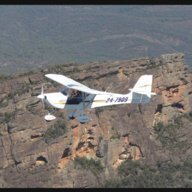David, I've kept silent (until now) about this event, preferring to let others assess and discuss the errors of others in comparison with one's own piloting skills - all part of improving one's own skills, long term.
In my opinion, we are all able to learn from our own mistakes, and from those of others. What I take particular objection to is the assertion that because a pilot is "recreational" then they must necessarily be inadequate or less committed to safety - not true in my experience....
In any group of people, there are good and bad achievers. Let's not cast aspersions so casually. Instead, let's endeavour to learn from other people when they share incidents, and not focus on who to vilify.
Yes, I agree completely, that the pilot has the ultimate responsibility for a safe outcome, and that a piloting mistake probably occurred in this incident. We are all human (professional or recreational). If we are reckless in finding blame, the sharing of incidents will stop, and the better long-term outcome of learning will be lost (to the detriment of all).





